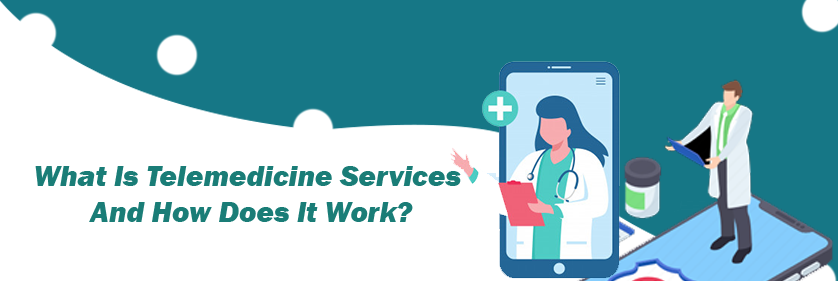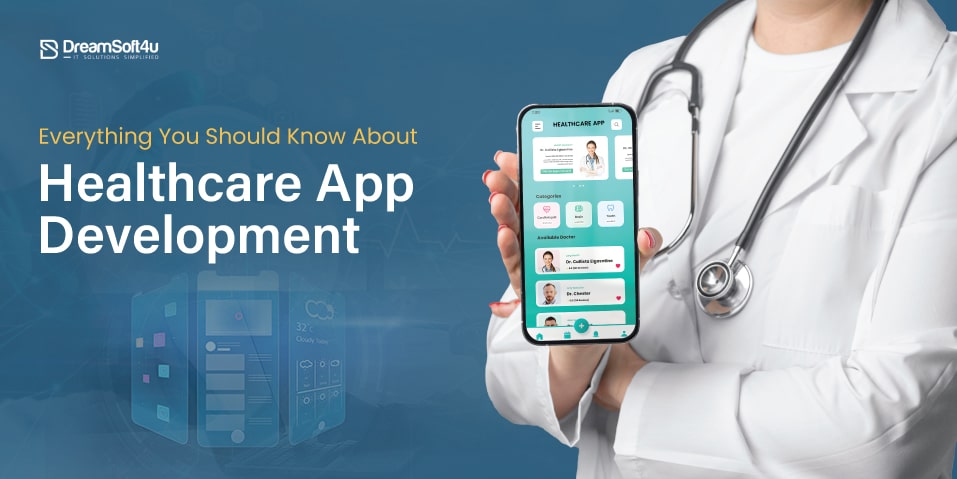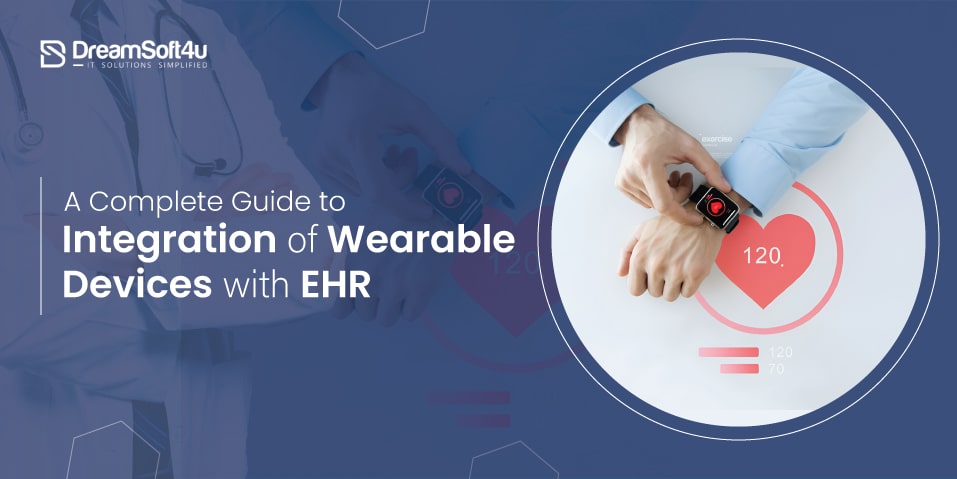For emergency cases such as heart attack or stroke, cuts or lacerations, or broken bones that require x-rays, splints, or casts, telemedicine is not acceptable for those cases. Anything which requires immediate, hands-on treatment should be dealt with in person. Telemedicine is also very useful for basic inquiries and follow-up consultations. Here we’ll discuss how Telemedicine work, for patients & for doctors and also the benefits of telemedicine in hospitals.
Telemedicine is the use of medical information exchanged from one location to another using electronic communications to make a better health status of a patient. Telemedicine provides a growing variety of software and services that use two-way video, e-mail, mobile phones, wireless devices, and other types of telecommunications technology.
Patient consultation by videoconferencing is still image sharing, e-health as patient services, remote monitoring of vital signs, continuing medical education, consumer-focused wireless apps, and nursing call centers are all considered to be part of telemedicine and telehealth, among all other apps.
Starting over forty years ago with hospital experiments providing services to patients in remote areas, the use of telemedicine has expanded exponentially and is now being incorporated into the daily operations of hospitals, specialty divisions, home health agencies, private physician’s offices, as well as consumers ‘homes and workplaces.
It’s useful for a range of other health problems like psychotherapy and teledermatology that provides moles, rashes, etc. consultations. Colds and flu, bites from insects, sore throats, diarrhea, and pink eyes are some other common conditions that telemedicine is used to treat.
Read Also: The Complete Guide Of Telemedicine
Table of Contents
ToggleWhat Services Can Be Provided by Telemedicine?
Telemedicine is often better interpreted in terms of the services rendered and the processes used to deliver those services. Here are only a few examples:
Primary Care and Specialist referral services can include primary care or an associate health care provider conducting a diagnostic consultation with a patient or a specialist assisting the primary care physician. This can include using live interactive video or using store-and-forward transmission of medical images, vital signs, and/or video clips along with data from patients.
Remote Patient Monitoring, including home telehealth, tools is used to remotely capture and send data for analysis to a home-health provider or remote diagnostic testing facility (RDTF). Such applications may involve a particular vital sign, like blood glucose or heart ECG, or several indicators for home-bound patients. Those services can complement the use of the nurses visiting.
Consumer Medical and Health Information includes the use of the Internet and wireless devices for patients to obtain specialized health information and access online discussion groups that provide peer-to-peer support.
Medical Education provides healthcare practitioners with continuing medical education certificates and special medical education workshops for target populations in remote areas.
Read Also: Telepsychiatry- Mental Healthcare from Distance
How Does Telemedicine work for Patients?
Patients request a visit, provide basic information about their condition, and then clinician either approve or reject the appointment or plan it for the future.
Telemedicine is a wonderful tool, but may not match every activity or circumstance. Before using it, determine the needs of your patient and make sure that it is an acceptable time to use the technology.
Depending on what your doctor offers, you can get medical services in different ways. Two of the most common are:
A patient portal. With the security of a username and password, a patient portal lets you send and get emails from your doctor or nurse, ask for prescription refills, and set up appointments. Your doctor can also share your lab or imaging test results and tell you what they mean. This is often faster than waiting to talk to them on the phone. Virtual appointments. Some doctors can let you have an appointment through a phone call or video conference. You can often have these meetings with mental and behavioral health professionals and urgent care clinics, as well.Benefits of Telemedicine in Hospitals
#1. Reduce hospital readmission rates
As many providers who working in hospital-system know, there is a constant drive to keep those readmission levels down — or bear the penalty. Beyond the possible financial cost, it’s clear that when the needless readmission rates are high, patient care is not handled effectively.
Telemedicine provides a means of holding down certain readmission rates. One study by the New York Home Care Association analyzed telehealth measures in five health care facilities in patients with heart failure, COPD and pneumonia, observing average readmission reductions ranging from 7% to 26%.
Since telemedicine solutions made it simpler for patients the follow-up with questions and red flags, they improve the ability to identify and prevent a problem before it becomes another lengthy, avoidable hospital stay.
Read Also: What is the difference between Telehealth and Telemedicine?
#2. Better medication adherence
According to the Annals of Internal Medicine this year, adherence to medications will result in nearly $300 billion in cost of avoidable healthcare. Moreover, if people don’t follow the recovery plans you have prescribed, they are likely to end up with the same symptoms right back in the hospital.
Using telehealth video visits to do follow-up check-in visits offers patients a quick, easy and efficient way to get updates about their care plans — and allows you to see how they’re doing without needing a full, in-person visit.
#3. Efficient post-operation follow-ups
As our team has been advised by many orthopaedic surgeons, they can spot-check a surgical wound in under 30 seconds. But usually, patient appointments in-person typically take much longer. That is less time spent in the OR by doctors, and more lost traveling or waiting for patients.
Of that reason, many surgeons use telehealth visits to carry out their follow-ups after surgery. We can send patients on their way or e-prescribe any required antibiotics without the recovering patient needing to leave their home with a simple spot-check over video.
#4. Extend access to speciality care
Keeping a fully staffed hospital running with access to all the specialities is expensive. Now, many telemedicine firms are allowing hospitals to hire remote specialists to extend their speciality care programs. Or, even a basic telehealth solution will help give patients access to your experts in a different division at one place. Without recruiting additional FTEs you will expand your care program.
#5. Improves care outcomes.
Each of these arguments for implementing telemedicine leads to an expanded treatment system. If patients have a simple, interactive way of communicating with their doctors, asking questions and avoiding avoidable visits to hospitals, they are more likely to have good outcomes in treatment. And like the readmission levels, the results of patient care are a measure to which you can pay careful attention when you look for quality-of-care scaling.
If you aren’t trying to add telehealth to the healthcare system yet, start shopping now. Adding telemedicine is not only a tactic to boost the patient care network, but it is also a fundamental service intended to keep you competitive with other health systems.
How does Telemedicine make healthcare workflow more effective and efficient?
Quality patient care is any healthcare provider’s objective, but the fact is that many spend up to 65% of their time doing administrative tasks rather than delivering treatment. Owing to increasingly rising management requirements, physicians, nurses, and administrators all face a time crunch.
Telemedicine technology solves these issues effectively. Telemedicine can improve staff productivity and minimize costs while also enhancing quality of care, patient satisfaction and clinical outcomes by allowing virtual video consultations between physicians and remote patients in real-time, two-way.
What are the pros and cons of telemedicine?
The beauty of telemedicine is that it’s available almost all the time. Whether you can’t get away from your office or you’re travelling and need to speak with your provider, telemedicine affords you access from anywhere there’s an internet connection.
Pros of Telemedicine Technology
-
Improved Access
Telemedicine has been used to provide health-care services to patients in remote areas for over 40 years. Telemedicine not only increases patient access but also helps doctors and health-care providers to expand their scope outside their office walls. Given the scarcity of physicians around the world – both in rural and urban areas – telemedicine has a remarkable potential to expand access to millions of new patients.
-
Cost Efficiencies
One of the most significant factors for financing and implementing telehealth technology is the reduction or control of healthcare costs. Telemedicine has been shown to minimize healthcare costs and improve productivity through improved chronic disease management, shared resources, shortened travel times and less or shorter hospital stay.
-
Improved Quality
Studies have consistently shown that the quality of health-care services delivered by telemedicine is as good as that offered in conventional consultations in person. Telemedicine provides a superior product with greater outcomes and patient satisfaction in certain specialities, especially in mental health and ICU care.
-
Patient Demand
Consumers are keen on telemedicine. Telemedicine biggest influence is on the patient, his family and his community. The use of telemedicine technology decreases patient travel time and related stresses. Study after study over the past 15 years has reported patient satisfaction and telemedicine support. Such services provide patients with access to facilities which may not otherwise be available, as well as medical care without the required to travel long distances.
Cons of Telemedicine Technology
-
Fewer in-person consultations
While this is also considered a positive, some patients and physicians find that in-person visits allow for a deeper level of connection and rapport to be built.
-
Poor internet connection could prevent care
Unfortunately, telemedicine does rely on a strong internet connection on both ends. If either the patient or provider is experiencing a lack of connectivity, call quality will be affected and the care needed may not be provided.
-
Reduced care continuity
This is especially an issue when it comes to mental health telemedicine services. Some apps allow patients to chat anonymously with psychologists and therapists, which prevents follow-up. If a person is at high risk for mental health conditions, this could create serious issues.
-
Technical training and equipment
Of course, providers will have to be trained in using telemedicine technology. Patients, too, may run into some trouble getting set up to effectively and efficiently use telemedicine tools.











